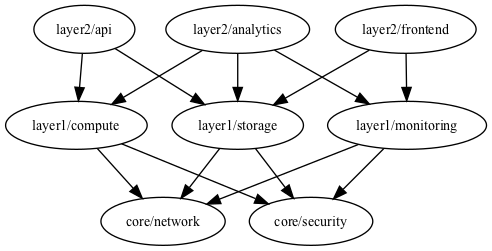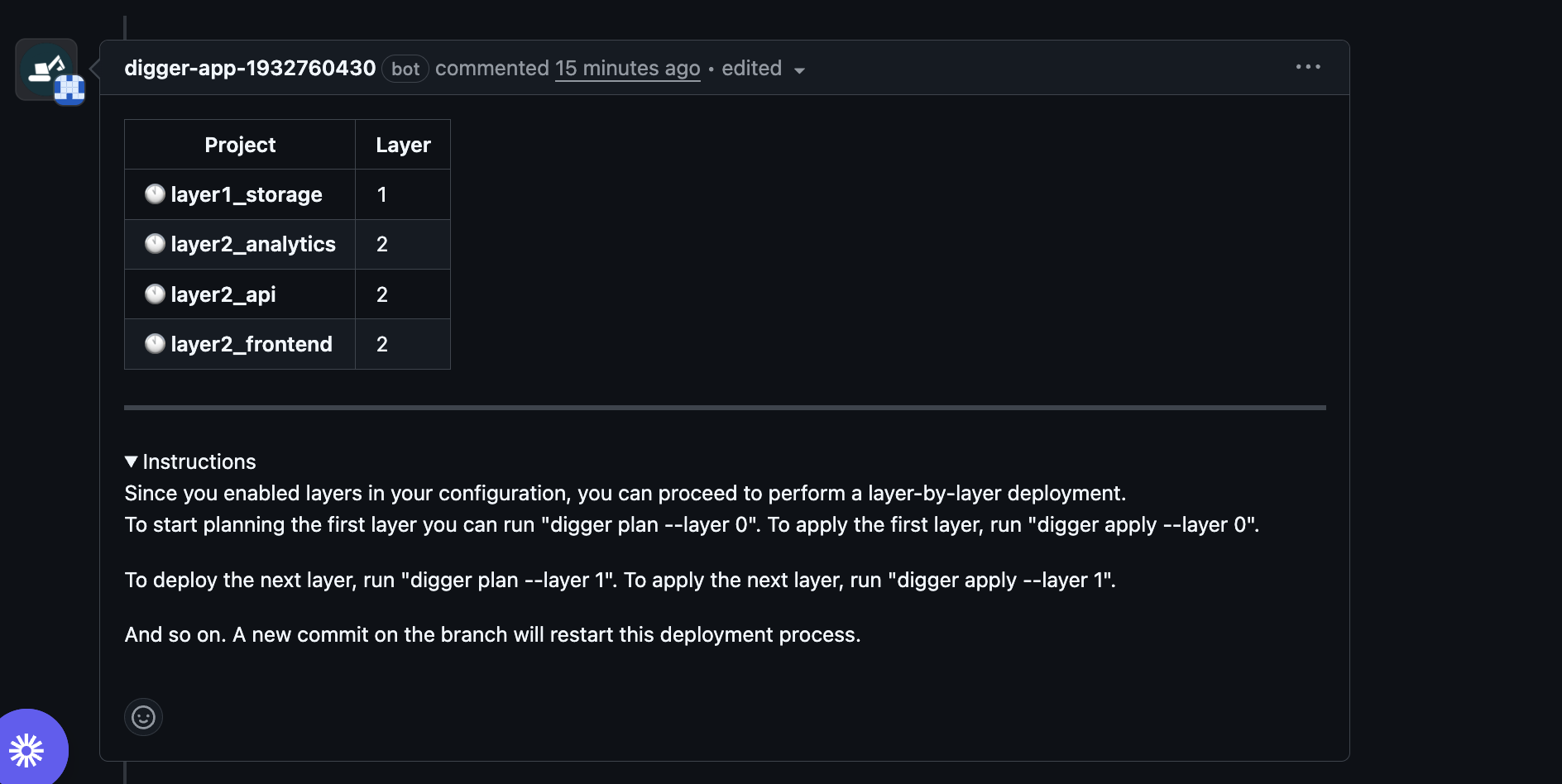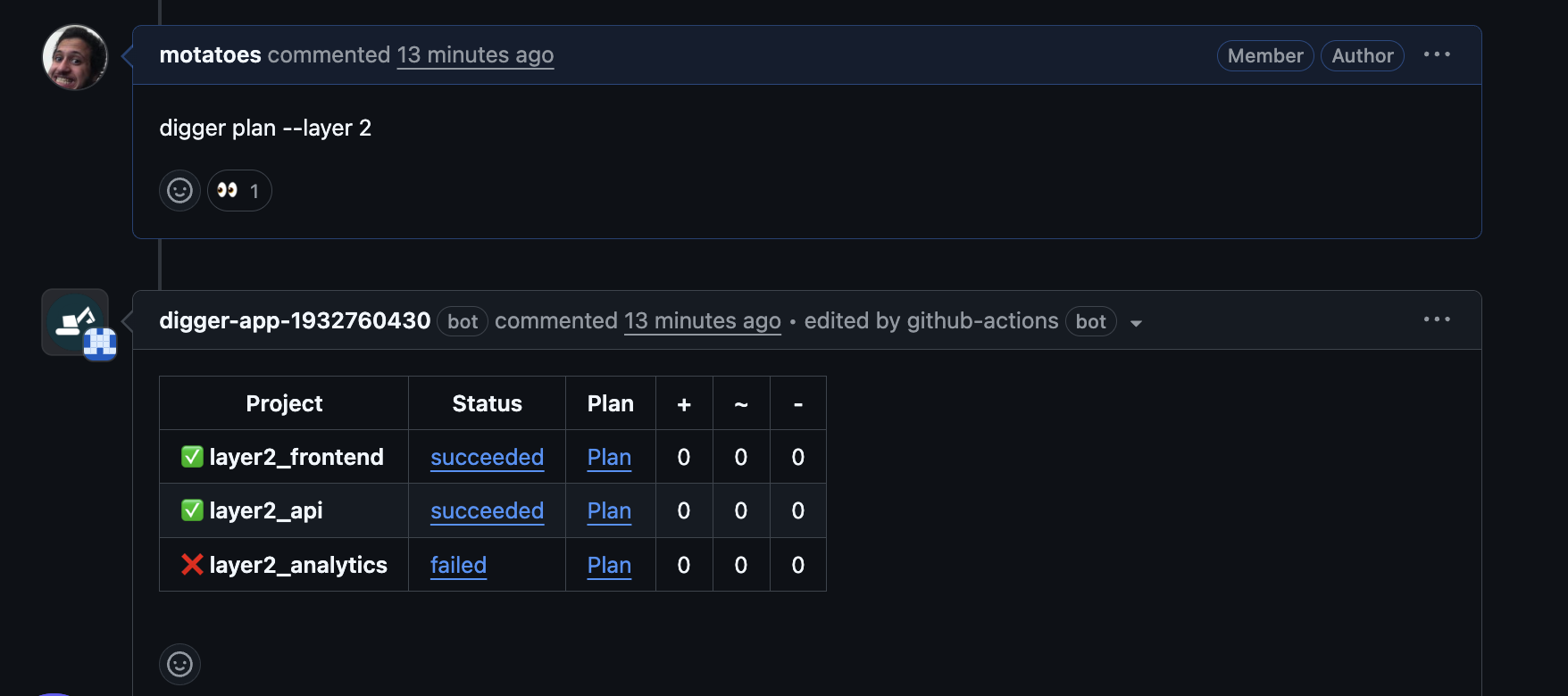


Usage with other flags
Using layering with other include_patterns works well to coordinate changes across layers. For example say you have a VPC module which is used in to generate some subnets and you need to use those subnet layers in a few other modules. You can have digger.yml as follows:Current Limitations
There are a few limitations currently which will be addressed in future releases:- The aggregate status checks of digger/plan and digger/apply may not work as expected
- The automerge feature may not work as expected

